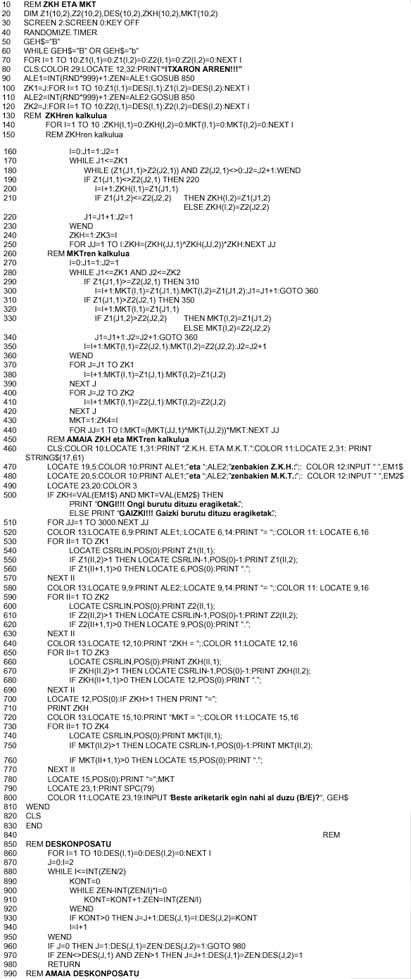Simplification of fractions
1990/04/01 Arrojeria, Eustakio - Elhuyar Zientziaren Komunikazioa | Lizaso, Pili - Informatika SailaElhuyar Fundazioa Iturria: Elhuyar aldizkaria
Following the line of the previous number, we will simplify fractions in this number. As we all know, fraction is a way of writing the rational number and is expressed in a/b. Therefore, numbers that can be written as fractions are rational numbers.
On the other hand, we know that simplification is a rule for calculating fractions. According to this rule, and among others, fractions 3/5 and 9/15 represent the same fraction. Therefore, if the numerator and denominator of a fraction are divided by an equal number other than zero, in this case 3, the fraction does not change. That is, the new fractions represent the same fraction.
In addition, in number 33 we explain that the Largest of the Common Dividers is the largest number of natural numbers that in turn have the consideration of divisors. Since the numerator and denominator of a fraction are natural numbers, we can say that: This dividing number is the largest of the Common Dividers.
After this introduction to the simplification of fractions, the program is explained. Below is the program that performs the simplification of fractions. See if it helps you.

Description of the program
- 20-50: Program initialization.
- 60-720: Main program cycle.
- 70-110: Extract two random numbers and break them down into factors (GOSUB 1000).
- 120 to 240: Calculation of the Major of
Common Dividers (ODC). Revista Ciencia y Técnica number 33. - 250: Calculation of the numerator (IMD) and denominator (DECD) of the simplified fraction.
- 260-290: On-screen writing of the created fraction.
- 300-340: Receive the user input.
- 350-380: Check if the input response is correct and inform the user.
- 390-700: The correct result appears by making the simplification step by step. For example:

Technical service = 22 . Services
- 390-420: The initial fraction is written.
- 430-600: The decomposed fraction provided, the numerator (440-510) on the one hand and the denominator (520-590) on the other, is divided by each of the factors contained in the PCD. To do this, each factor of the PCD is found in the numerator and denominator. Once located, the subtraction of exponents is performed producing the result factor. If the difference between the exponents is 0, the factor is eliminated (480-500 and 560-580).
- 610-700: Drafting of calculations.
PROCEDURES
- 1000-1140: Factorial decomposition procedure of a number. See Elhuyar. Technical Scientific Bulletin no. 31.
- 2000-2050: Procedure for calculating the length of the decomposed fraction line in factors. The length of the numerator and denominator is calculated and the longest length of both is calculated.
- 3000-3210: Decomposed fraction writing procedure in the factors.

Gai honi buruzko eduki gehiago
Elhuyarrek garatutako teknologia




